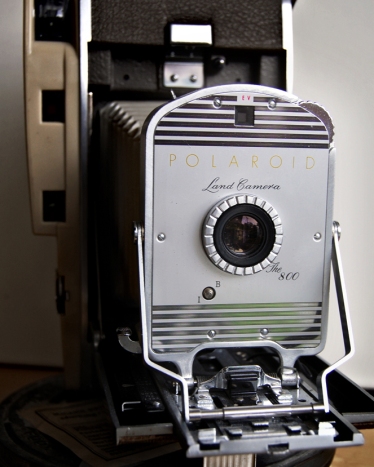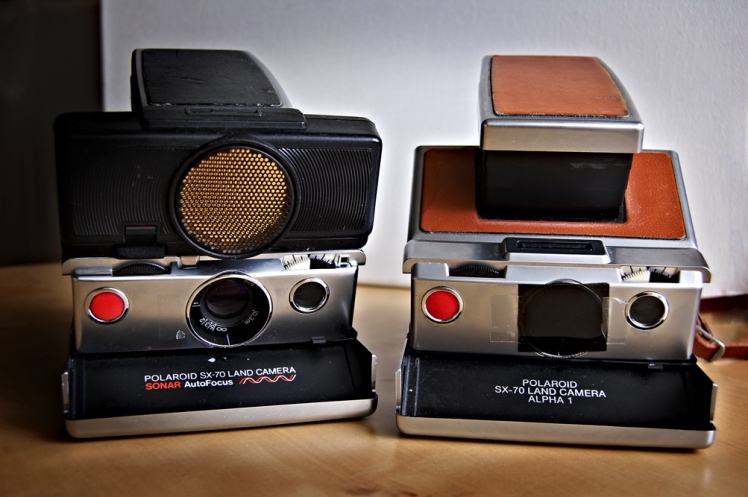We have taken the speed of digital photography for granted; the digital camera allows you see the photo you have taken instantly. The image is there, but it is not tangible – just pixels on a screen. Imagine taking a photograph and then instantly having that photo artifact in your hands. In the middle of the last century, this was a revolutionary concept.
Edwin Land, a scientist and inventor, founded the Polaroid Corporation in 1937. He is best known for developing the world’s first Instant camera, called the Polaroid Land camera. In 1944, Land was inspired by his 3-year-old daughter’s confusion as to why a camera could not instantly produce pictures after they were taken – instant photography was born. It was the invention of instant film and the creation of the instant film camera that would make Polaroid a household name. The first Polaroid Land camera went on sale in 1948. More about Edwin Land and Polaroid can be found here and also here.

Prior to Polaroid’s “instant photography”, you had to wait (sometimes for weeks) for your photos to be developed and returned to you. Though the Land Camera’s instant film eliminated the wait; they required complex procedures to take and produce good photographs. Each photographic paper image had to be manually removed from the camera, peeled open after 60 seconds, and needed several minutes to dry – it could get rather messy. The Polaroid SX-70 Land Camera (introduced in 1972) was the first automatic, motorized, folding, single-lens reflex camera which made self-developing instant color prints.

This is a cool film produced in 1972, to introduce the Polaroid SX-70 Land Camera.
Polaroid SX-70 advert – YouTube.
Undoubtedly, the coolest of the Polaroid cameras is the SX-70. The fun with the original SX-70 camera was not limited to the fact that you could have your images instantly, but was also due the fact that the original “Time-Zero” film’s gelatin-based emulsion had the ability to be manipulated after exposure and development. This is what attracted me and my fellow photography school buddies to the SX-70 back in 1997. When I was growing up, we had a Polaroid One-Step (non-folding) camera in the late 1970s, so I was used to the SX-70 style. But it was the retro-cool of the folding SX-70 Land Camera along with the emulsion manipulation capabilities of the “Time-Zero” film, that elevated it to the artistic. In my photography school group grad show exhibit, I entered a work that consisted of a series of 12 SX-70 manipulations mounted in a single frame.

Photos: C. Hagemoen
After exposure, the framed photo would pop out of the camera and after a few moments the image would appear (contrary to the 2003 OutKast song, “Hey Ya!”, you did not need to shake the Polaroid photo for the image to develop). Using a blunt tipped tool, you could “draw” on the image – thus manipulating the gelatin-based emulsion. If the image was kept warm, you had up to 5 minutes to highlight and create impressionistic effects on the image.
Unfortunately, with the advancements and popularity of digital cameras, “instant film” cameras (and for that matter film cameras in general) were becoming less popular. By 2005-2006 Polaroid’s SX-70 “Time-Zero” film was phased out of production. In early 2008, Polaroid announced that it would stop producing instant film for Polaroid cameras. It looked like the end of the SX-70 and analogue photography…. or was it?
Enter the “Impossible Project” – founded late in 2008 by a group of former Polaroid employees determined to save analogue instant photography.
More about this in Polaroid SX-70, part 2.
Just trying out this “talk bubble” comment “icon”.